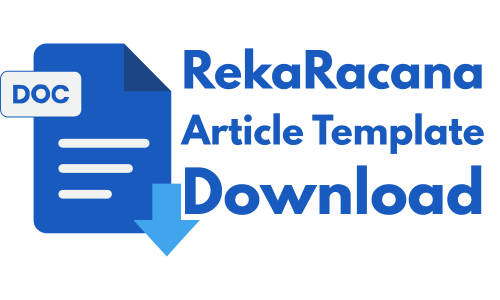Kajian Perbandingan Kuat Tekan dan Berat Jenis Beton dengan Pasir Mundu dan Pasir Malang
Sari
ABSTRAK
Pasir atau agregat halus adalah material pengisi yang diikat semen dengan air sehingga menjadi massa padat, sehingga kualitasnya sangat berpengaruh langsung terhadap mutu beton. Adanya berbagai jenis pasir di Pasaran Mendasari, seperti Pasir Malang dan Pasir Mundu, menjadikan penelitian ini bertujuan untuk mengetahui pengaruh jenis pasir terhadap kuat tekan dan berat volume beton. Pasir Mundu memiliki tekstur yang keras dan kasar, halmana hasil penambangan di kota Cirebon dan umum digunakan untuk bahan bangunan. Sedangkan Pasir Malang sering digunakan masyarakat sebagai media tanam yg berasal dari magma gunung berapi yang terpecah kealiran sungai. Beton direncanakan menggunakan metode SNI dan memiliki kuat tekan rencana 19 MPa. Hasil uji kuat tekan beton dengan Pasir Malang menghasilkan kuat tekan beton rata-rata sebesar 10,08 MPa dan kuat tekan beton maksimum sebesar 11,50 MPa sedangkan untuk penggunaan Pasir Mundu diperoleh kuat tekan beton rata rata sebesar 12,51 MPa dan kuat tekan beton maksimum sebesar 13,61 MPa. Pengujian berat jenis menunjukkan beton dengan Pasir Mundu memiliki berat volume 2.194,93 kg/m3 halmana nilainya lebih besar dibandingkan dengan Pasir Malang yaitu 1.960,97 kg/m3. Berdasarkan pengujian kuat tekan dan berat volume dapat disimpulkan disimpulkan bahwa beton dengan Pasir Mundu memiliki kuat tekan dan berat jenis yang lebih besar sedangkan beton dengan Pasir Malang memiliki kuat tekan dan berat jenis yang lebih kecil.
Kata kunci: pasir Malang, pasir Mundu, berat jenis, kuat tekan
Â
ABSTRACT
Sand or fine aggregate is a filler material that is bound by cement with water so that it becomes a solid mass, which is why the quality of sand has a direct effect on the quality of concrete. The existence of various types of sand on the market, such as Malang and Mundu sand, underlies this research with the aim of wanting to know the effect of the type of fine aggregate/sand on the compressive strength and unit weight of concrete. Mundu sand has a hard and rough texture which is the result of mining in the city of Cirebon and is commonly used for building materials. While Malang sand is often used by the community as a planting medium which comes from volcanic magma that splits into rivers. The concrete in this study was planned using the SNI method and had a design compressive strength of 19 MPa. The results of the concrete compressive strength test with Malang sand produced an average concrete compressive strength of 10.08 MPa and a maximum concrete compressive strength of 11.50 Mpa, while for the use of Mundu sand, an average concrete compressive strength of 12.51 MPa and a maximum concrete compressive strength of 13.61 MPa. The specific gravity test shows that concrete with Mundu sand has a volume weight of 2,194.93 kg/m3 greater than Malang sand which is 1,960.97 kg/m3. Based on the compressive strength and unit weight tests, it can be concluded that concrete with Mundu sand has a greater compressive strength and specific gravity, while concrete with Malang sand has a smaller compressive strength and specific gravity.
Keywords: Malang sand, Mundu sand, specific gravity, compressive strength
Teks Lengkap:
PDFDOI: https://doi.org/10.26760/rekaracana.v9i2.60
Refbacks
- Saat ini tidak ada refbacks.
e-ISSN : 2477-2569
dipublikasikan oleh :
Program Studi Teknik Sipil
Institut Teknologi Nasional Bandung
Alamat: Jl. PHH. Mustofa 23 Bandung 40124
Kontak: Tel. 7272215 (ext. 206) Fax. 7202892
Didukung oleh :
Badan Musyawarah Pendidikan Tinggi
Teknik Sipil Seluruh Indonesia (BMPTTSSI)
RekaRacana © 2025 by Itenas is licensed under CC BY-SA 4.0








